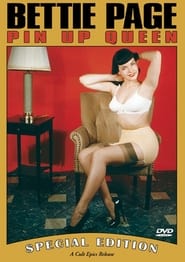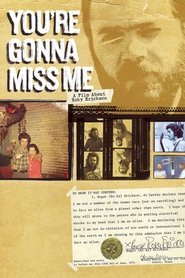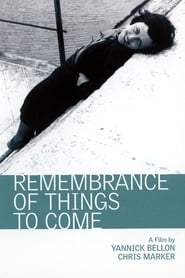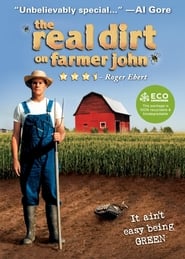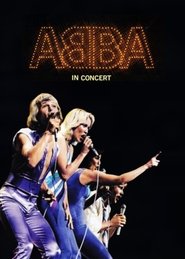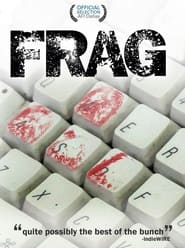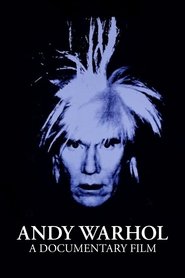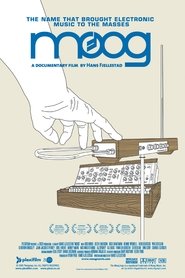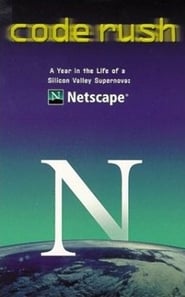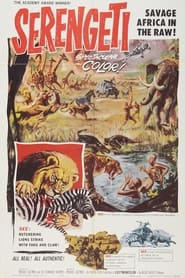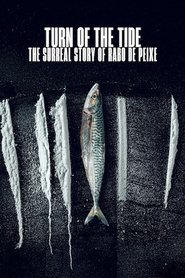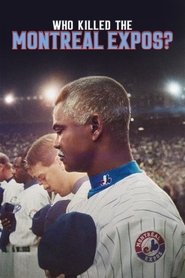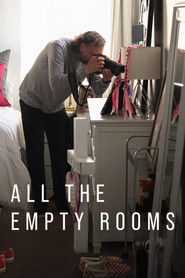Top Rated Documentary Movies - Page 324
-
Bettie Page: Pin Up Queen
1998
star 4.8Bettie Page was the top pin-up queen of the 50s and developed a cult following in the 80s. She is known for her distinctive hair style and is reputed to be the most photographed pin-up model of all time. This compilation shows Bettie's playful side, featuring her scenes from the full-length burlesque films Striporama (1953), Varietease (1954) and Teaserama (1955) and a dozen complete short films from the 50s including Tantalizing Betty Dances Again, Tambourine Dance, Joyful Dance by Betty, Betty's Hat Dance, Dream Dance by Betty, Dance of Passion, Betty's Clown Dance Part 2, Betty's Lingerie Tease Dance, Betty's Second G-String Dance, Betty's Fireplace Dance, and Pin-Up Beauties Fight (with June King). -
Solo
2008
Solo
2008
star 5.5Michôd and Peedom's hour-long documentary recounts the tale of Andrew McAuley, an Australian adventurer who, in 2006, launched a quest to become the first person to paddle a kayak across the treacherous Tasman Sea, one of the loneliest and toughest stretches of water in the world. -
American Radical: The Trials of Norman Finkelstein
2009
star 6.4American academic Norman Finkelstein discusses foreign policy toward Israel and the Middle East. -
You're Gonna Miss Me: A Film About Roky Erickson
2007
star 6.4Documentary about rock pioneer Roky Erickson, detailing his rise as a psychedelic hero, his lengthy institutionalization, his descent into poverty and filth, and his brother's struggle with their religious mother to improve Roky's care. -
Bush's Brain
2004
Bush's Brain
2004
star 6.9An examination of political consultant Karl Rove's influence on George W. Bush's candidacy. -
Remembrance of Things to Come
2001
star 6.8A personal history of France, told through photos by French photographer Denise Bellon. -
Monster Camp
2007
Monster Camp
2007
star 6.7Welcome to Monster Camp, the true story about a world where people transform into creatures, heroes, and monsters to escape their daily lives. In the vein of Lord of the Rings, World of Warcraft, and Dungeons and Dragons; these enthusiasts have developed a complicated world to bring their fantasies to life. Romantic relationships are forged between characters. Friendships are destroyed over plot disputes. Characters are slain and never return. But keeping this world alive takes a lot of real world work. And unless someone is willing to take charge, the fantasy may be lost forever. -
Tupac Shakur: Thug Angel
2002
star 8Documentary examining the politics, music, and life of Tupac Shakur. -
The Real Dirt on Farmer John
2006
star 7An outcast in his community, Farmer John bravely stands amidst a failing economy, vicious rumors, and violence. By melding the traditions of family farming with the power of art and free expression, this powerful story of transformation and renewal heralds a resurrection of farming in America. Through highly personal interviews and 50 years of beautifully textured footage, filmmaker Taggart Siegel shares Farmer John’s haunting and humorous odyssey, capturing what it means to be wildly different in a rural community. -
ABBA in Concert
1980
ABBA in Concert
1980
star 7.3ABBA's 1979 tour of North America and Europe, with emphasis on performances at Wembley Arena, London. -
Frag
2008
Frag
2008
star 6.6Exploited, abused and sometimes abandoned most gamers fail to reach the top, but like all sports heroes exist. FRAG is the true story of professional video gaming outlining the evolution of the 1980’s arcade game competitions to the elite tournaments of today for millions of dollars around the globe. -
Andy Warhol: A Documentary Film
2006
star 8.2Ric Burns unearths rarely seen footage and offers keen observations on the life and artistic influence of Andy Warhol. [Made for and aired on PBS's American Masters series.] -
Moog
2004
Moog
2004
star 5.2Best known as the inventor of the Moog synthesizer, Robert Moog was an American pioneer of electronic music, and shaped musical culture with some of the most inspiring electronic instruments ever created. This "compelling documentary portrait of a provocative, thoughtful and deeply sympathetic figure" (New York Times) peeks into the inventor's mind and the worldwide phenomenon he fomented. -
Code Rush
2000
Code Rush
2000
star 6.8Life on the edge in Silicon Valley - home of high tech, high anxiety, and high stakes. Take a revealing look at Netscape Communications engineers as they set out boldly and brazenly to save their company. A virtual panorama of human drama and techno-thrills, Code Rush puts you at the center of the high-intensity clash of science, engineering, and commerce. -
Fuel
2008
Fuel
2008
star 7.2Record high oil prices, global warming, and an insatiable demand for energy: these issues define our generation. The film exposes shocking connections between the auto industry, the oil industry, and the government, while exploring alternative energies such as solar, wind, electricity, and non-food-based biofuels. -
Serengeti Shall Not Die
1959
star 6.1The film tells of the beginnings of the Serengeti National Park in Tanzania. At the end of the 1950s, the Tanzanian National Park Administration wanted to fence in the protected area around the Ngorongoro Crater. Bernhard and Michael Grzimek were invited by the national park administration in 1957 to get a precise picture of the animal migrations and to provide the national park administration with the values they needed for their project. Using a new counting method with two airplanes, the Grzimeks found out that the migration of the herds was different than assumed. -
Turn of the Tide: The Surreal Story of Rabo de Peixe
2025
star 7.4In June 2001, hundreds of kilos of cocaine washed up in a Portuguese village. This gripping documentary reveals the long-lasting impact on the community. -
Who Killed the Montreal Expos?
2025
star 6.7An investigation into the downfall of the Montreal Expos, Canada's first Major League Baseball team — and who was ultimately responsible. -
All the Empty Rooms
2025
All the Empty Rooms
2025
star 6.5A journalist and a photographer set out to memorialize the bedrooms left behind by children killed in school shootings. -
Rita Lee: Mania de Você
2025
star 8.2Just before her departure, Rita Lee writes a farewell letter to her three children and her husband and musical partner, Roberto de Carvalho, in which she reflects on her life and joyfully celebrates her family. Her final moments also mark the time to look back and review a career full of unforgettable successes, which led her to sell more than 55 million records. But it is also a time to reveal her downfalls, her vulnerable side, and her excesses as the queen of rock. With completely unseen personal archives and exclusive testimonies from her own family, as well as producers, journalists, musicians, and celebrities such as Gilberto Gil and Ney Matogrosso, "Rita Lee: Mania de Você" presents her definitive legacy.
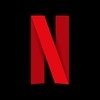 Netflix
Netflix
 Amazon Prime Video
Amazon Prime Video
 Apple iTunes
Apple iTunes
 Apple TV Plus
Apple TV Plus
 Disney Plus
Disney Plus
 Google Play Movies
Google Play Movies
 Paramount Plus
Paramount Plus
 Hulu
Hulu
 HBO Max
HBO Max
 YouTube
YouTube
 fuboTV
fuboTV
 Peacock
Peacock
 Peacock Premium
Peacock Premium
 Amazon Video
Amazon Video
 The Roku Channel
The Roku Channel
 AMC+
AMC+
 Kocowa
Kocowa
 Hoopla
Hoopla
 The CW
The CW
 Vudu
Vudu
 Starz
Starz
 Showtime
Showtime
 PBS
PBS
 Pantaflix
Pantaflix
 FXNow
FXNow
 Tubi TV
Tubi TV
 Kanopy
Kanopy
 Comedy Central
Comedy Central
 Crunchyroll
Crunchyroll
 Microsoft Store
Microsoft Store
 Redbox
Redbox
 Sun Nxt
Sun Nxt
 ABC
ABC
 DIRECTV
DIRECTV
 Crackle
Crackle
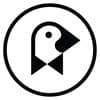 Fandor
Fandor
 Plex
Plex
